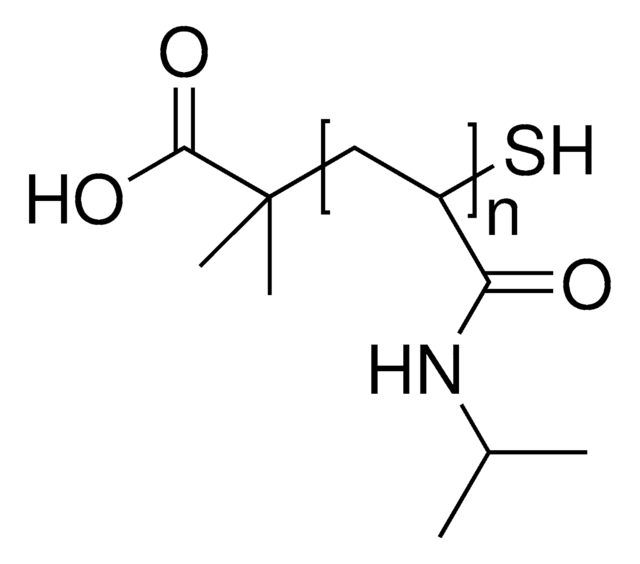733350
Bis[2-(2-bromoisobutyryloxy)undecyl] disulfide
97%
Synonyme(s) :
11,11′-Dithiobis[1-(2-bromo-2-methylpropionyloxy)undecane], DTBU
About This Item
Produits recommandés
Pureté
97%
Forme
solid
Solubilité
1.500 at 20 °C
Densité
1.177 g/mL at 25 °C
Chaîne SMILES
CC(C)(Br)C(=O)OCCCCCCCCCCCSSCCCCCCCCCCCOC(=O)C(C)(C)Br
InChI
1S/C30H56Br2O4S2/c1-29(2,31)27(33)35-23-19-15-11-7-5-9-13-17-21-25-37-38-26-22-18-14-10-6-8-12-16-20-24-36-28(34)30(3,4)32/h5-26H2,1-4H3
Clé InChI
IEGYEGYUHSQEAZ-UHFFFAOYSA-N
Application
Mention d'avertissement
Warning
Mentions de danger
Conseils de prudence
Classification des risques
Eye Irrit. 2 - Skin Irrit. 2 - STOT SE 3
Organes cibles
Respiratory system
Code de la classe de stockage
11 - Combustible Solids
Classe de danger pour l'eau (WGK)
WGK 3
Point d'éclair (°F)
Not applicable
Point d'éclair (°C)
Not applicable
Certificats d'analyse (COA)
Recherchez un Certificats d'analyse (COA) en saisissant le numéro de lot du produit. Les numéros de lot figurent sur l'étiquette du produit après les mots "Lot" ou "Batch".
Déjà en possession de ce produit ?
Retrouvez la documentation relative aux produits que vous avez récemment achetés dans la Bibliothèque de documents.
Les clients ont également consulté
Articles
ATRP is a successful method for precise polymer synthesis with controlled molecular weights and high chain end functionalities.
Protocoles
Polymerization via ATRP procedures demonstrated by Prof. Dave Haddleton's research group at the University of Warwick.
Notre équipe de scientifiques dispose d'une expérience dans tous les secteurs de la recherche, notamment en sciences de la vie, science des matériaux, synthèse chimique, chromatographie, analyse et dans de nombreux autres domaines..
Contacter notre Service technique![Bis[2-(2′-bromoisobutyryloxy)ethyl]disulfide](/deepweb/assets/sigmaaldrich/product/structures/154/479/8d52d6e3-59da-4e56-8d9e-41b636138ca6/640/8d52d6e3-59da-4e56-8d9e-41b636138ca6.png)












